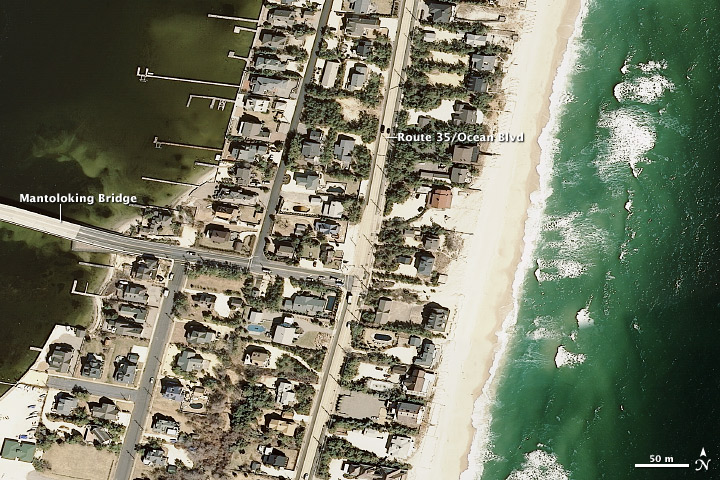 |
2012 - Hurricane Sandy |
 |
Hurricane Sandy made landfall as a post-tropical storm in NJ on October 29, 2012, bringing a large and damaging surge to the coasts of NJ, NY, CT, and other states. Hurricane Sandy began as a typical late season hurricane in the Western Caribbean. It made landfall on Jamaica as a category 1 hurricane and on Cuba as a category 3 hurricane. After passing over Cuba it lost some strength as it passed over the Bahamas. Sandy moved up the East Coast of the U.S. as a large category 1 hurricane. Sandy took an unusual westward track into NJ as it approached New England. Just before landfall, Sandy completed transition to a post-triopical cyclone.
 Damage along the NJ coastline from Hurricane Sandy |
|
Estimates of the damage from Hurricane Sandy are around 50-70 billion dollars, second only to Hurricane Katrina in 2005. Sandy caused 147 deaths, 72 of those in the U.S. The storm damaged or destroyed at least 650,000 homes and caused power outages for approximately 8.5 million customers from Maryland to Massachusetts. Sandy also generated blizzard conditions in parts of North Carolina and West Virginia with snowfall totals as high as 3 feet.
During the forecasting of Sandy, the decision was made not to post hurricane warnings/watches for the coast north of Cape Hatteras. This was done because Sandy was forecast to become a post-tropical storm, potentially well before coming ashore, and it was thought that changing the watches and warnings would be confusing. In the end, there was some confusion around the watch/warning decision. As a result, the National Weather Service has made changes to the forecast procedures and will roll-out changes to forecast products over the next few years. One big change is the storm surge product that is separate from the hurricane watch/warning.
|
 |